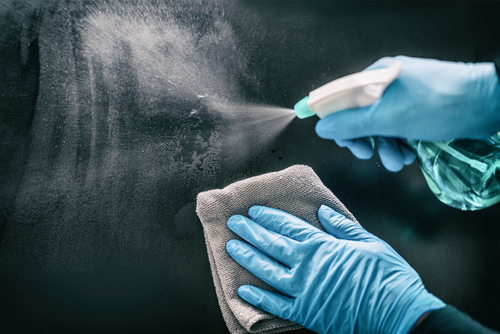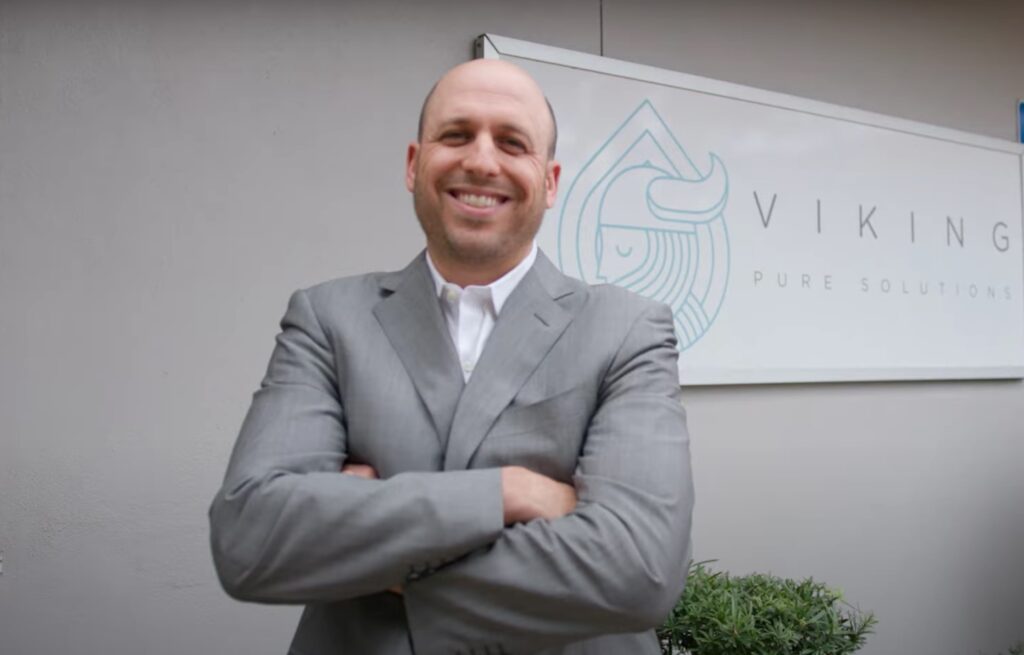Editor’s note: FM Perspectives are industry op-eds. The views expressed are the authors’ and do not necessarily reflect those of Facilities Management Advisor.
Antimicrobial resistance, also known as AMR, is an emerging global health crisis that threatens to undermine decades of medical progress. Defined as the ability of microorganisms like bacteria, viruses, and fungi to resist the effects of drugs that once successfully treated them, AMR can lead to prolonged illness, higher medical costs, and increased mortality. While much of the focus on AMR has been on the overuse of antibiotics, there is an often-overlooked contributor that resides within our everyday environments: the residue left behind by common cleaning chemicals in facilities.

Understanding Antimicrobial Resistance
AMR happens largely through genetic mutations or when microbes acquire resistance genes from other organisms. As the resistant strains multiply, the effectiveness of existing treatment diminishes, leading to infections that are more difficult to treat and control.
The overuse of antibiotics in medicine and agriculture are known drivers of AMR. However, growing evidence suggests that regular use of disinfectants (antibacterials) and cleaning agents in different types of facilities across the country, including schools, hospitals, assisted living facilities, and office buildings, may also contribute to its spread.
The Role of Cleaning Chemicals in AMR
A lot of commonly used cleaning products are designed to not only remove dirt, oil, and stains, but also to disinfect. Products that bill themselves as antimicrobials also kill and limit the growth of microorganisms. On the surface this sounds great, but oftentimes they are leaving behind a substantial amount of chemical residue in their wake. Over time, these residues can create an environment where only the strongest, most resistant microbes survive.
Similar to how antibiotics exert selective pressure on bacteria, certain cleaning agents can do the same. Disinfectants that leave behind residue may not completely eliminate all microorganisms. Instead, they kill off the susceptible ones, leaving behind those that have some degree of resistance. These surviving microbes can then multiply, leading to a population dominated by resistant strains.
Certain cleaning residues can contribute to the formation of biofilms—a complex community of microorganisms that adhere to surfaces and protect themselves with a slimy, protective layer. These biofilms are extremely difficult to remove and serve as a breeding ground for microorganisms, making infection and contamination more commonplace.
Why Should Facilities Managers Care About Antimicrobial Resistance?
We all know that facilities managers already have a lot on their plate. They’re responsible for the day-to-day operations of a building, which means ensuring the safety and cleanliness of their space as well as managing staff and budgets. With so much to look after, AMR might seem like a distant concern. However, there are many compelling reasons why facilities managers should prioritize preventing AMR through policies and procedures in their operations.
AMR can have a direct, negative impact on the health of everyone who comes into a facility. Whether they are employees, students, or office workers, the presence of infections that are harder to treat can increase the likelihood of viral outbreaks.
In facilities like schools, hospitals, and nursing homes, you often have a large congregation of either elderly or otherwise immunocompromised individuals. These groups are particularly susceptible to infections, and resistant strains pose an even greater threat to them.
As the challenges posed by AMR become more well-known, facilities are becoming more vigilant in stopping their spread. If an outbreak of a resistant infection occurs and is traced back to inadequate cleaning practices, the facility could be held liable. This could lead to costly lawsuits, damage to reputation, and loss of business.
Facilities that take a more strategic approach to cleaning and disinfecting can reduce the long-term costs associated with AMR, like employee absenteeism. A healthier workforce is one that takes less time off for sick days and is generally more efficient.
What Can Facilities Managers Do to Combat AMR?
The link between cleaning chemicals and AMR highlights the need for a more strategic approach to facility hygiene. Maintaining a clean and safe environment is essential, but today’s facilities managers also need to approach this challenge with a longer-term view, assessing the impact of the cleaning products being used.
The first step they can take is to prioritize the use of non-toxic, residue-free cleaning products that are efficient, without contributing to the spread of AMR. Hypochlorous acid (HOCI), for example, is an emerging alternative that offers powerful disinfecting properties without leaving harmful residues. Unlike traditional chemical disinfectants, HOCI breaks down into harmless components after use, minimizing the risk of fostering resistant microbes.
Facilities managers should also regularly assess the effectiveness of their cleaning protocols and ensure that staff are properly trained in the correct use of cleaning products. Overuse or improper dilution of disinfectants can increase the likelihood of residue buildup, which can contribute to resistance.
What Is Hypochlorous Acid, and How Can It Be Used in the Fight Against AMR?
HOCI is a naturally occurring molecule that is highly effective at killing a wide range of pathogens, including bacteria, viruses, and fungi.
It works as a broad-spectrum disinfectant that’s effective against resistant strains: It’s been shown to be highly effective against a wide range of microorganisms, including antibiotic-resistant bacteria such as MRSA (Methicillin-resistant Staphylococcus aureus) and VRE (Vancomycin-resistant Enterococci). By effectively killing these pathogens, HOCI can help reduce the spread of resistant strains in facilities.
It’s also free of toxic chemicals and environmentally friendly, making it safe for regular use: Unlike many chemical disinfectants that contribute to environmental pollution and can leave harmful residues, HOCI breaks down into harmless components—primarily water and a small amount of salt—after use. This makes it safe for frequent application, reducing the selective pressure on microbes to develop resistance.
HOCI also produces no harmful byproducts or carcinogenic compounds, making it an environmentally responsible choice that minimizes the impact on ecosystems.
HOCI can be used across a wide range of surfaces, including those in healthcare settings, schools, food processing plants, and public spaces. Its versatility allows for consistent, broad-spectrum disinfection without the drawbacks of harsher chemicals, making it ideal for use in sensitive environments where vulnerable populations reside.
Antimicrobial resistance is a complex and multifaceted issue that requires a holistic approach to tackle. While antibiotics remain a critical focus, the role of cleaning chemicals in contributing to AMR cannot be overlooked. By rethinking the products we use and adopting safer, non-toxic alternatives, we can help mitigate the spread of resistant microorganisms and protect public health for future generations.

Joshua Schwartz is the president and co-founder of green cleaning product company Viking Pure Solutions.

